5 Methods to Remove Your Lawn

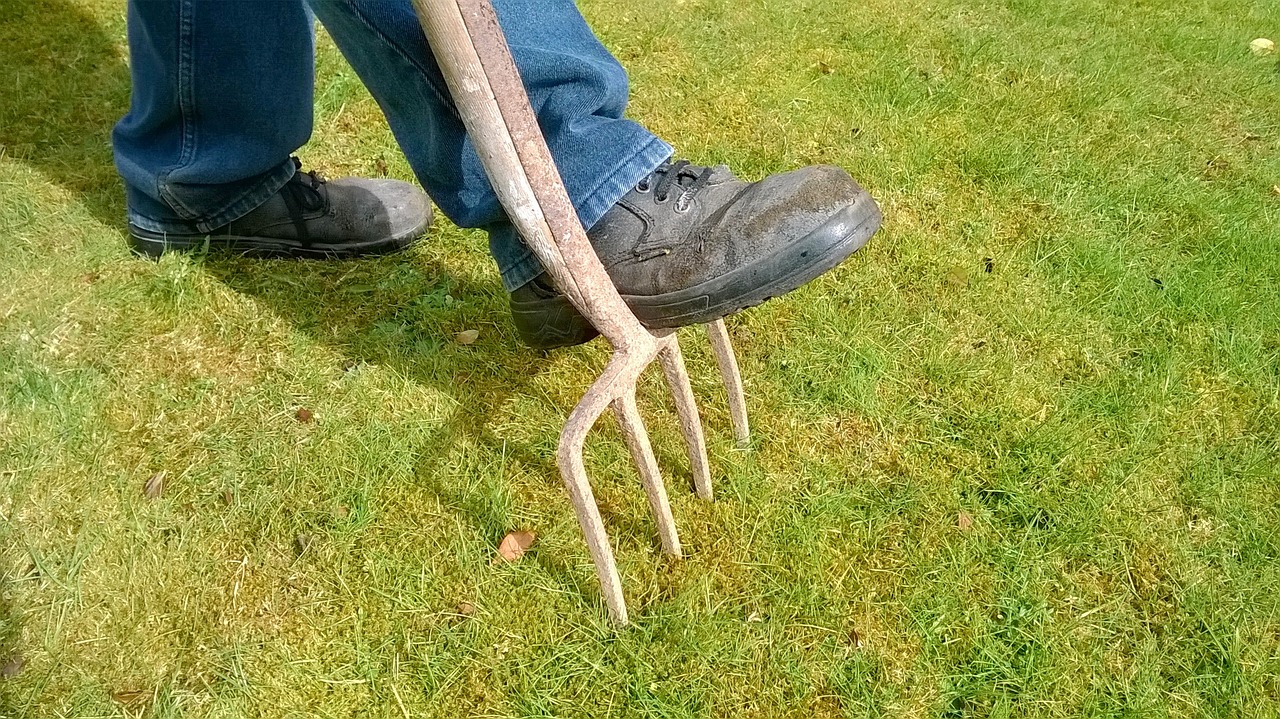
If you have an ornamental lawn, you should consider removing and replanting this area to save water and increase bio-diversity of your garden. Once you have decided to do this, the first step is removing your lawn. Here are the 5 most common methods for doing this. There is no one-size fits all approach for this so each method should be assessed against the type of grass you have and how much time and effort you can afford to expend on this project.
1 - Sheet Mulch
Sheet mulching is a permaculture method for improving soils by layering compost, mulch and cardboard. When applied over a lawn, the sheet suffocates the grass by preventing from getting air or sunlight. A detailed guide to sheet mulching is available in one of our earlier posts. Sheet mulching takes months to completely kill the lawn, but sheet mulch will create a very healthy soil for your plants that will be replacing the lawn. Most lawns sit on very compacted soil, the compost in the mulch will help to break this up and improve drainage.
This method can be applied any time of the year, although it is best to schedule the application of sheet mulch several months before planting season in your area. If you live in a home that is part of a HOA, you may fall afoul of their rules if you have mulch in place for several months without any plants.
Note that if you have Bermuda grass in your lawn, it needs to be removed as sheet mulching is not as effective in killing this type of grass.
2 - Solarization
Solarization is a method similar to sheet mulching, where a layer of plastic is laid over the grass and left for 6 to 8 weeks. The plastic cooks the soil by trapping heat, and this will kill the grass, as well as any weeds or seeds in the soil. It will also help control disease by killing pathogens in the soil. Unfortunately this method can also kill beneficial organisms, however they will return shortly after the solarization process is complete.
This method is best done in Summer when the sun is strong. As with sheet mulching, your garden will looks less attractive during this process and you could violate HOA rules doing this. Aside from hiring someone to remove your lawn, this is the least labor-intensive method for removing a lawn.
As with sheet mulching, this is not 100% effective against Bermuda grass and removal is the best approach.
3 - Digging out by hand
Removing the turf along with its roots is the most effective way to kill a lawn and the only way to completely remove Bermuda grass. The downsides are that this is the most labor-intensive method, and it will remove your topsoil along with the grass.
The simplest way to do this is using a flat spade to cut and remove the turf with a fork. This can be back-breaking work if you have a large lawn, so luckily there are a couple of specialist tools you can use
Grubbing Hoe
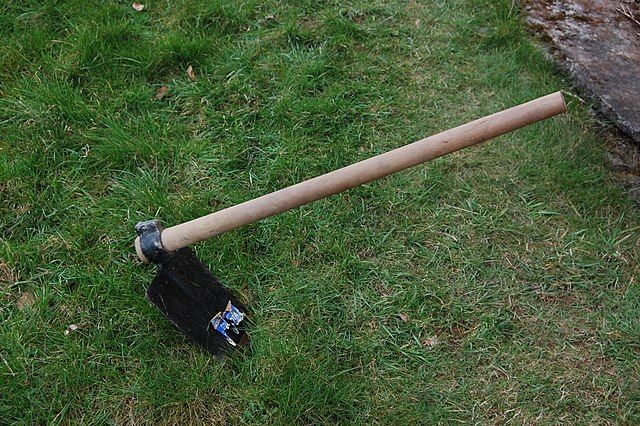
A Grubbing Hoe (also known as a grub hoe) is a more heavy duty version of the standard garden hoe, featuring a large wide blade fixed securely at the bottom of the tool's long handle. These can be used to remove turf with fairly minimal effort by chopping forward into the soil and lifting it up out of the ground. The video below shows how large pieces of grass can be easily removed with their roots using a grubbing hoe:
Using a grubbing hoe is my preferred method because you can use the tool for other tasks around the garden, so you won't be buying an expensive tool for a single use.
Kicker-style Sod Cutter
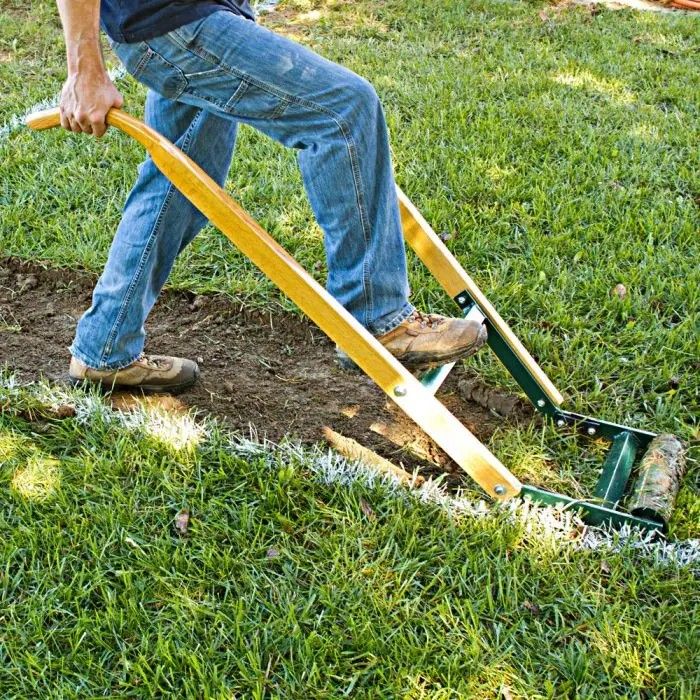
A kicker-style sod cutter is the most effective and least strenuous way to remove turf when doing it by hand. With this tool, you push it forward using leg strength to cut the turf out of the ground. When done correctly, this tool can create long strips of turf that can be rolled up for easy disposal, or even reused in another location. The disadvantage to this tool is that it can be expensive to purchase and is a single-purpose tool that you may not have further use for after removing your lawn.
4 - Motorized sod cutter
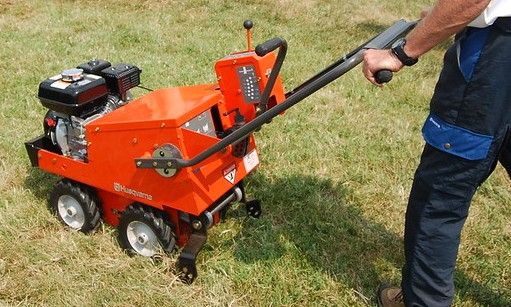
If you want to dig out your turf without doing it manually, you can use a motorized sod cutter. This is operated similar to a lawn mower where you push it from behind while it cuts rolls of turf out from the front. These are expensive machines, but they can typically be rented by the hour or day at home improvement stores. This is the least labor intensive method for digging out your lawn. The downside is that motorized sod cutters are very heavy pieces of equipment that could be difficult to transport to the lawn area if it is not adjacent to a driveway.
5 - Herbicide
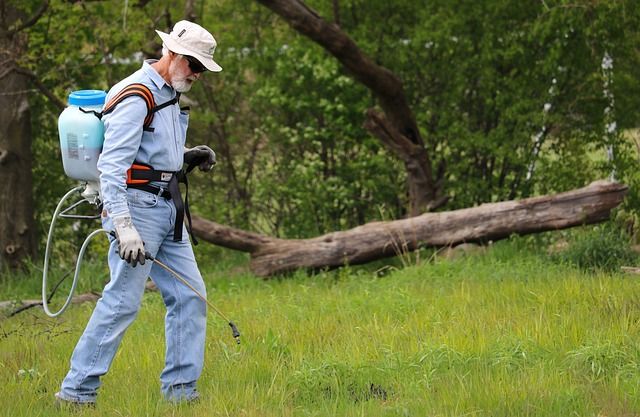
Applying a herbicide to your grass is the least effort of all of these methods. A post-emergent selective herbicide such as Fluazifop can be applied to the grass when it is actively growing. After application it should take 7 days for the grass to die back and it can then be covered with compost and mulch, ready for planting a new garden to replace the lawn.
The downsides to using herbicide is that it will expose you to toxic chemicals that may also negatively impact your soil biology. Furthermore, as the grass needs to be actively growing when the herbicide is applied, it limits when you can do this. That said, with tenacious grasses like Bermuda or Kikiyu this may be the only option to eradicate these types of grasses, and is a fall-back method if you tried the other methods but later start seeing new growth of the old grass.





